Another day another trip. Jas insisted on visiting Amsterdam. Checking what kind of transport to take, train or car, the latter wins the choice. Is it "Holland" or "the Netherlands"?
The official name of the northwestern European land of tulips and windmills is "Koninkrijk der Nederlanden," or Kingdom of the Netherlands. It was founded in 1579 as a union of various provinces and cities who resisted rule by the Spanish. One of these provinces was the province of Holland (now divided into Noord [North] Holland and Zuid [South] Holland), which originated in the 12th century as a fief of the Holy Roman Empire. Even after the provinces of the Netherlands united, Holland was still the dominant region. The cities of Amsterdam, Rotterdam, and The Hague are in the Hollands. Thus, a lot of the economic and political dealings outside countries had were with the Hollands, and the name "Holland" continues to be popular with foreigners.
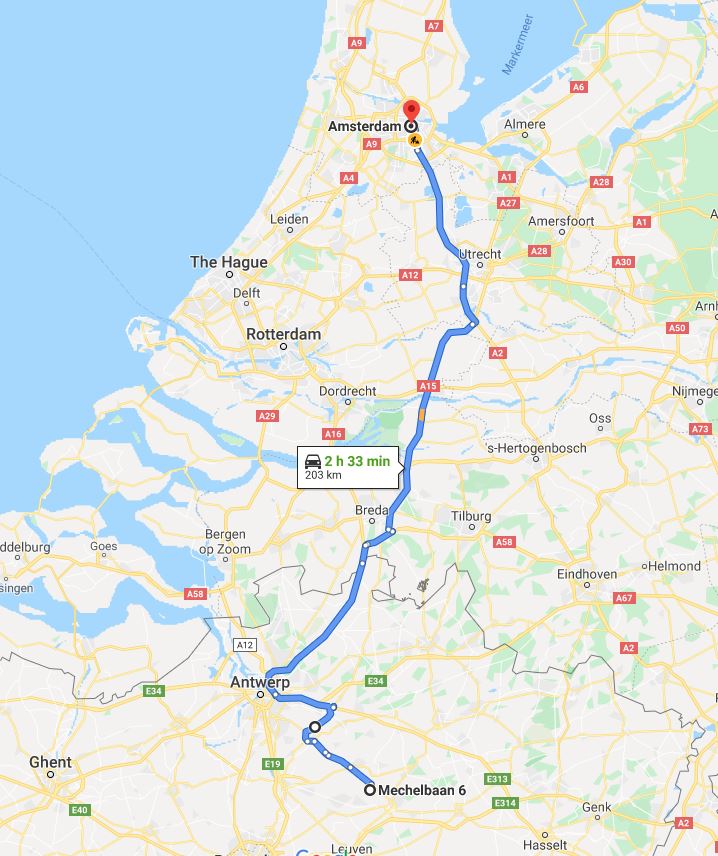 The route from Begijnendijk to Amsterdam.
The route from Begijnendijk to Amsterdam.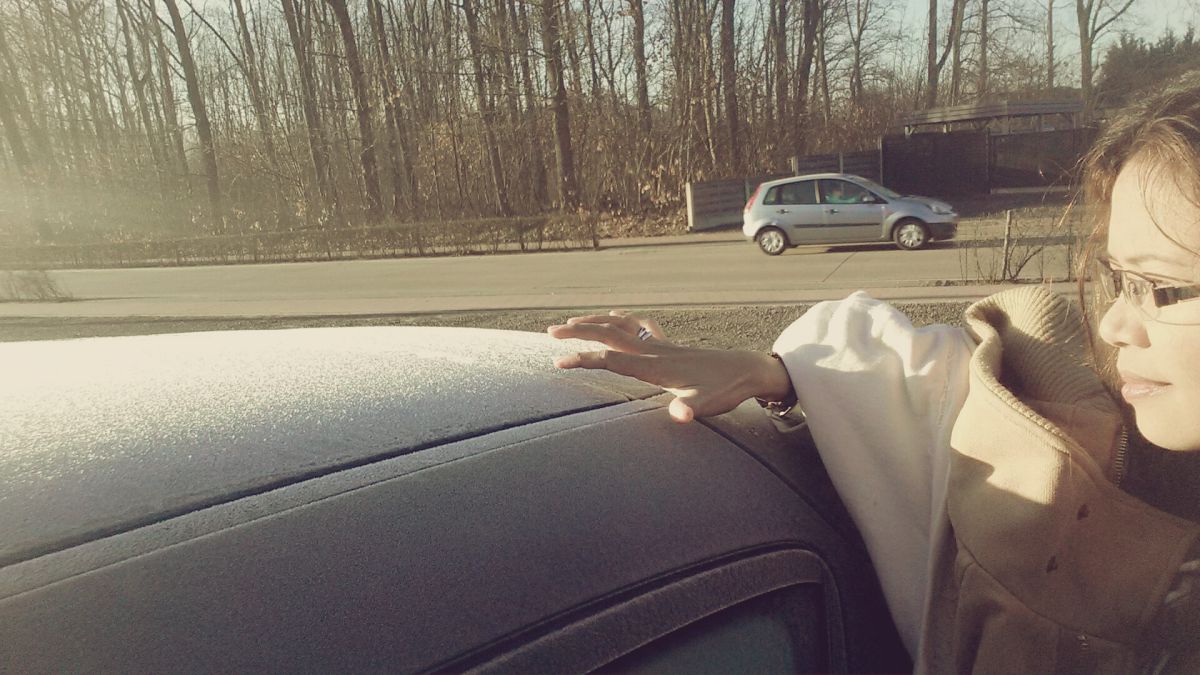
The morning frost is present on the car and on the greens. But no icy roads. The navigator pointed out the best route is over Lier, get on the highway towards Antwerp, over the Ring going north towards Breda and follow the indications for best route to Amsterdam.
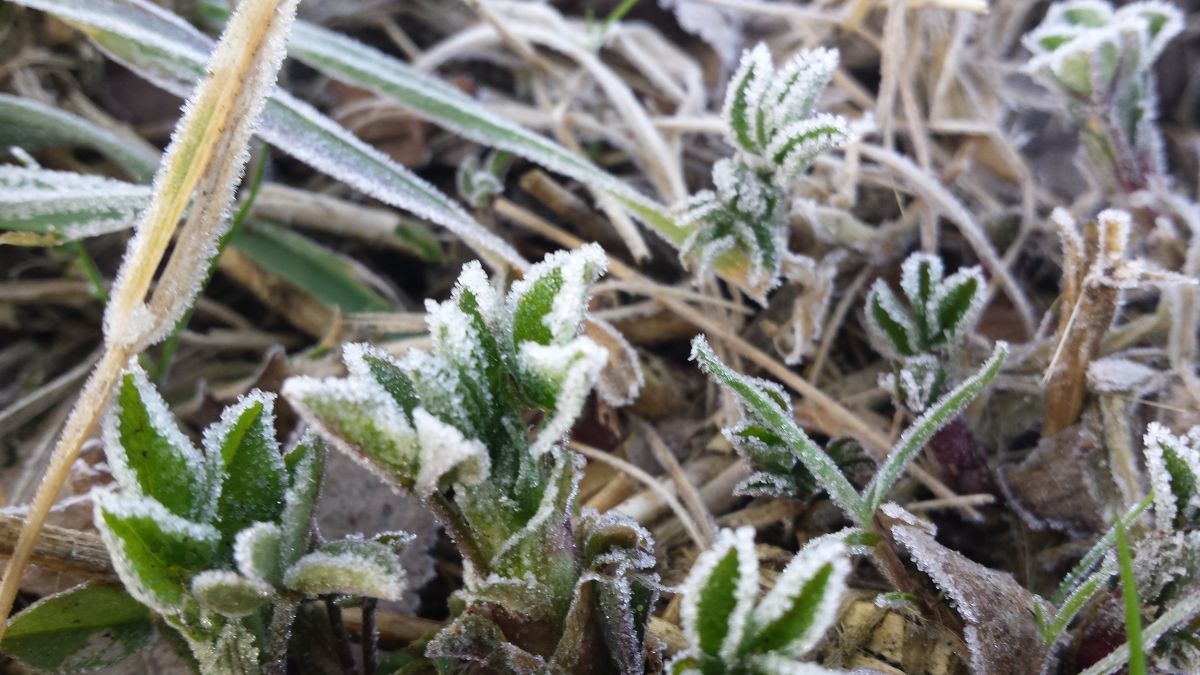
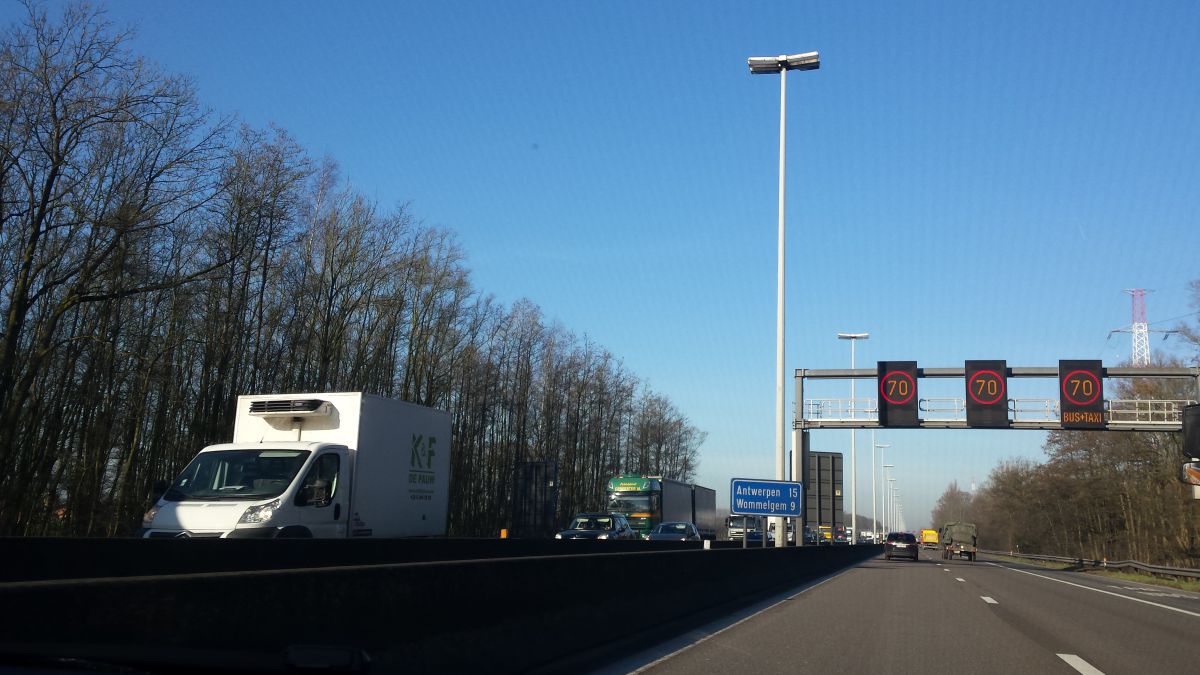 Highway to Antwerpen
Highway to Antwerpen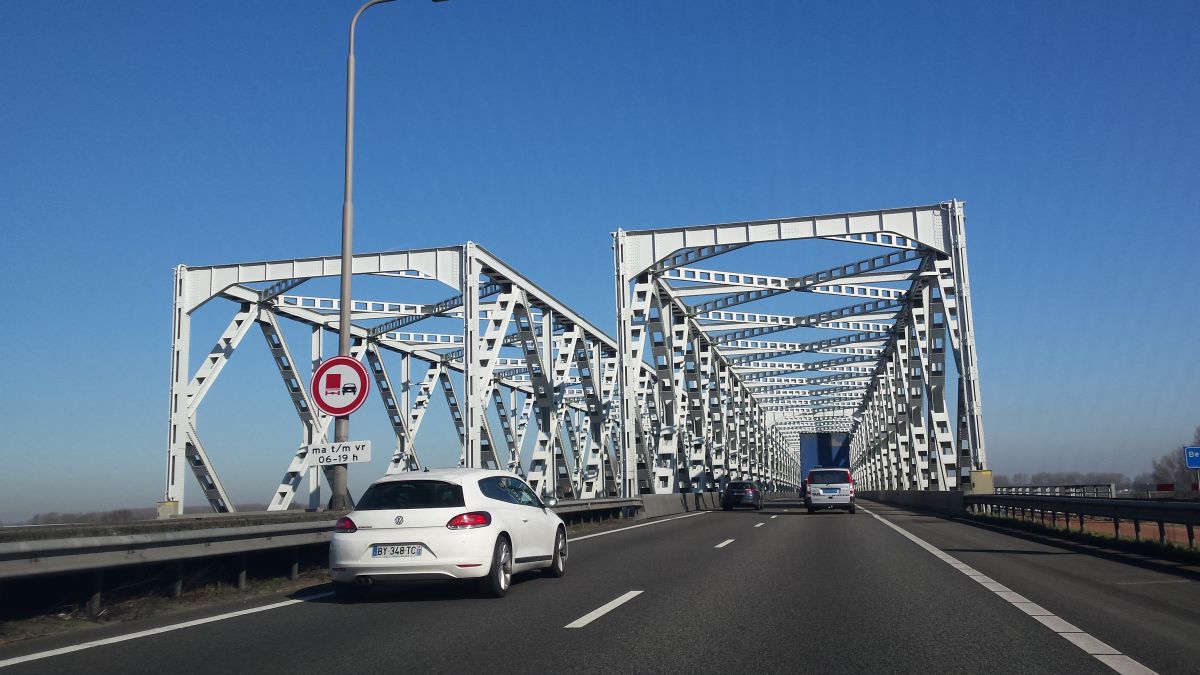 One of the numerous bridges we crossed in
One of the numerous bridges we crossed in 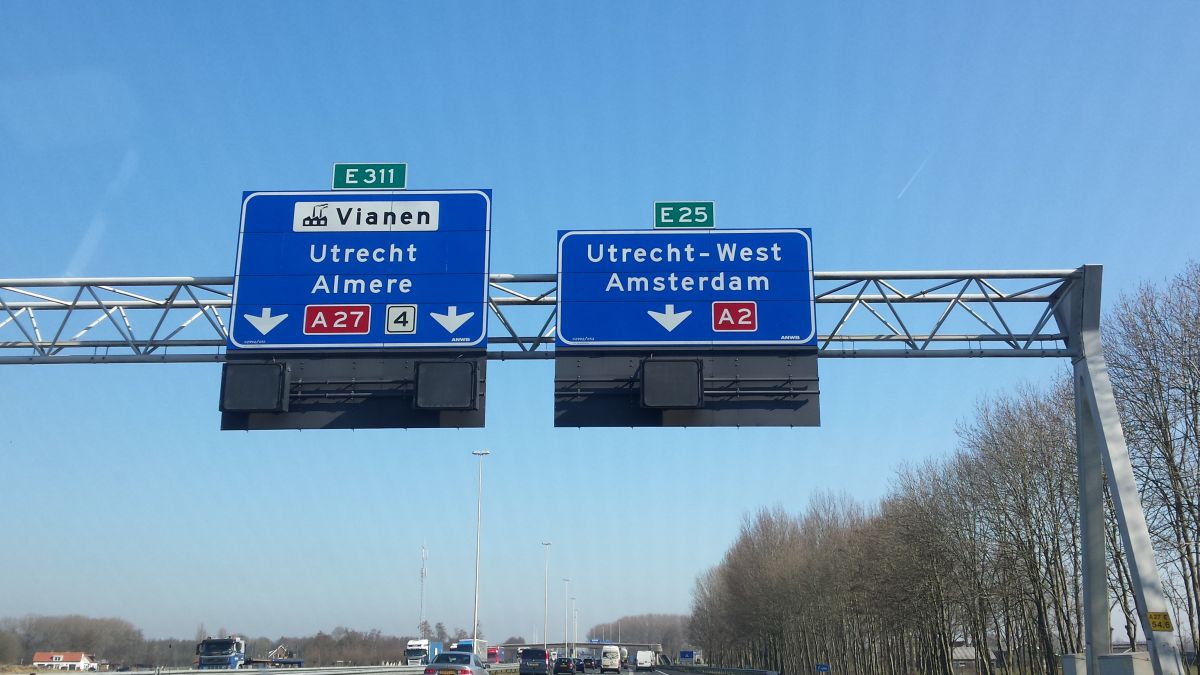 Amsterdam comes closer
Amsterdam comes closerFinally arrived on the outskirts of Amsterdam City. First thing to do is finding a parking space. A Hospital we passed indicated a parking facility. Not looking futher we parked the car in the Hospital basement. The plan is to take the tram to center of the city and walk back to the hospital. Hop on the tram passing the hospital and it takes us to "Amsterdam Centraal" the central train station and the heart of the city.
As we get off the tram, it is clear that this place is the transport hub of the city. Locals and tourist arrive with train, bus, tram, subway and even boats or leave with one of these modes of transport.
A short walk from the station, Jas noticed a "coffeeshop" in a small ally. But it didn't smell like Starbucks! It is one of the many places where you can smoke Cannabis, also known as marijuana. The shops sell small quantities for sigaret smoking. It is legal in the Netherlands.
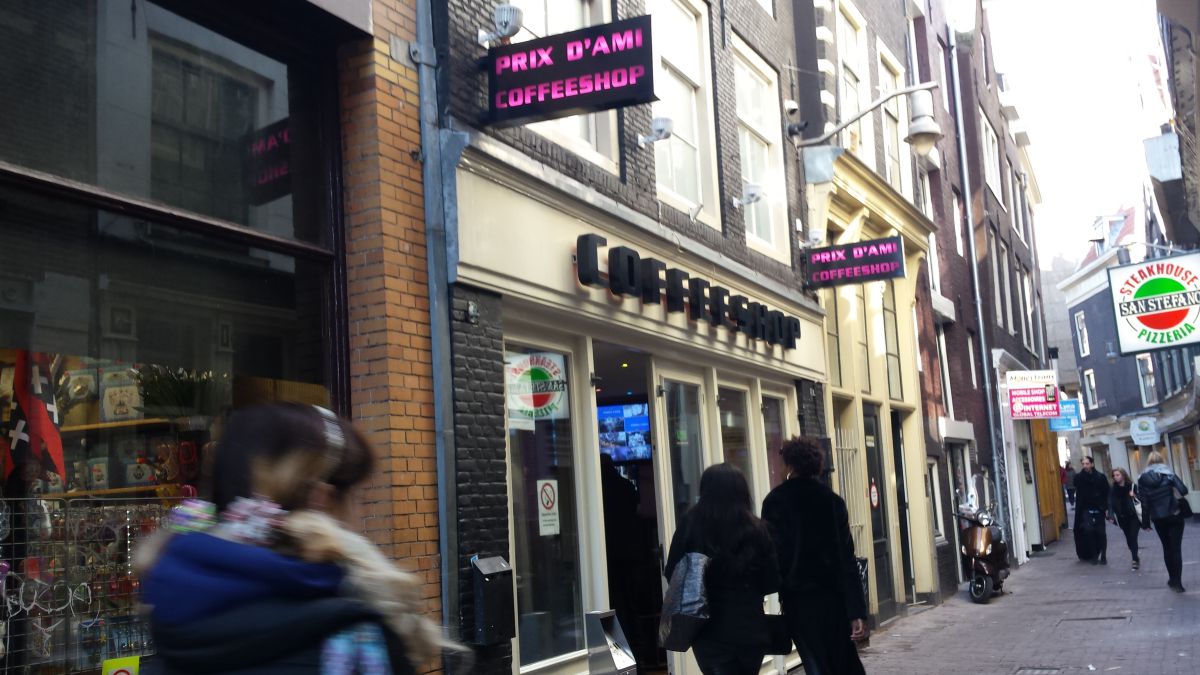 The coffeshop with smoky coffee
The coffeshop with smoky coffee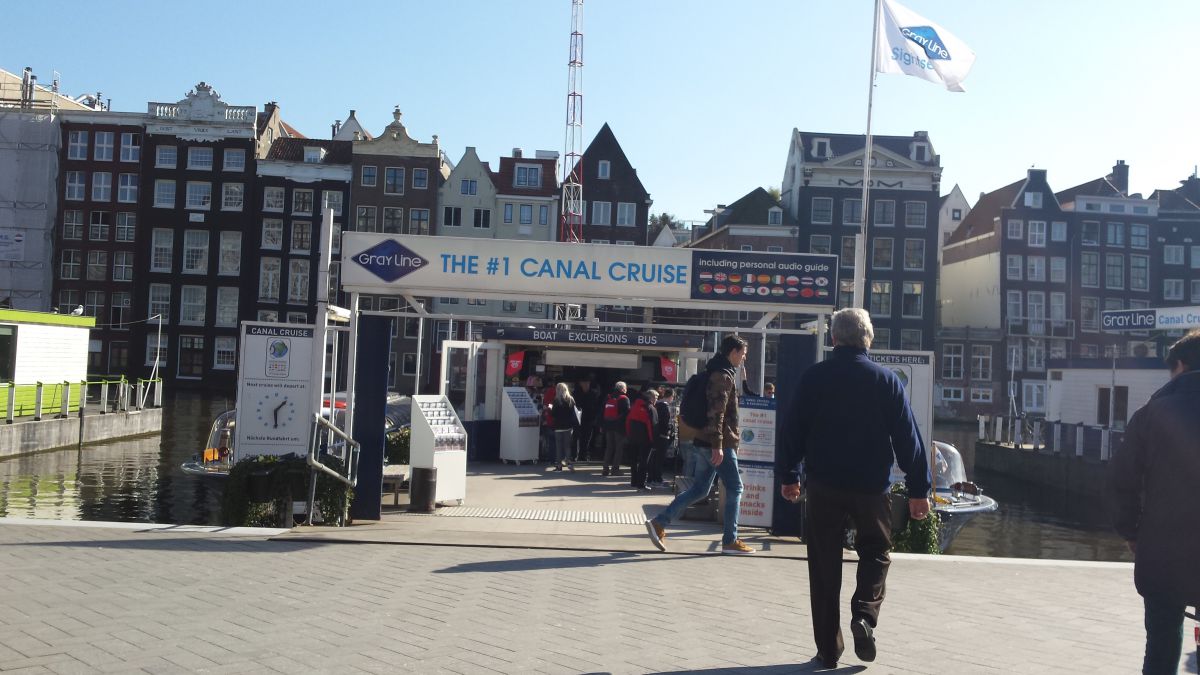 Tourist boat terminal
Tourist boat terminal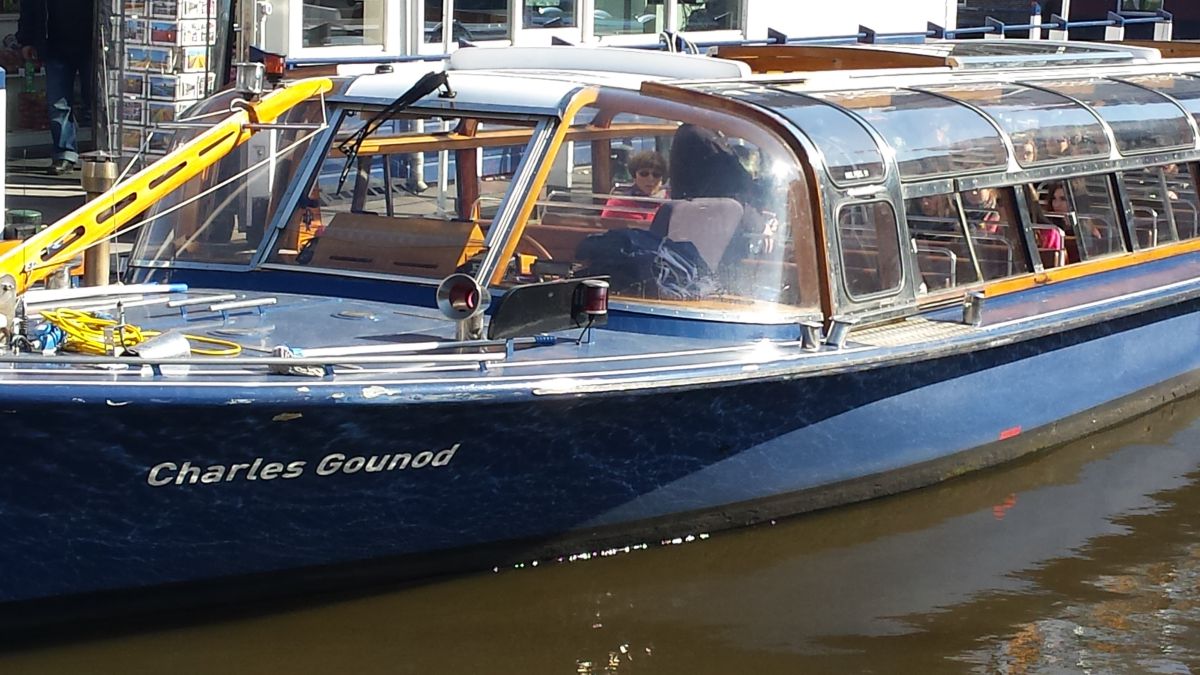 Panoramic cruise boats
Panoramic cruise boats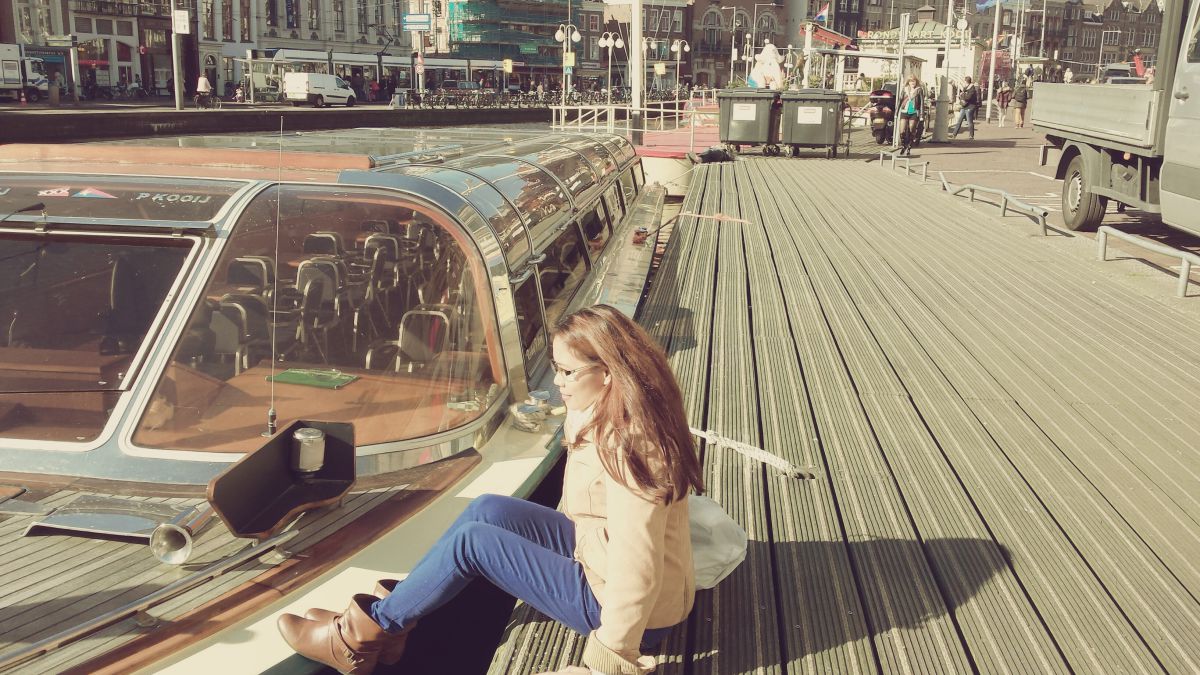 Jas pusshing off a boat
Jas pusshing off a boat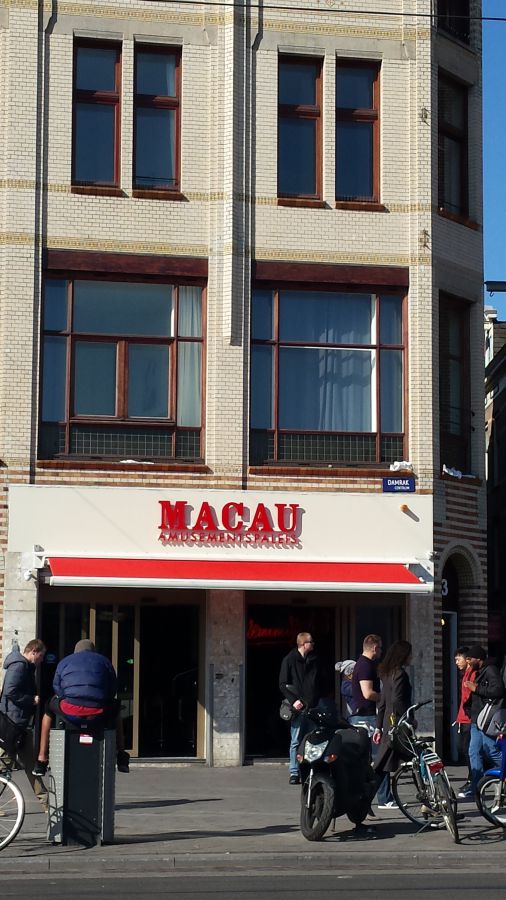 Little Macau
Little Macau 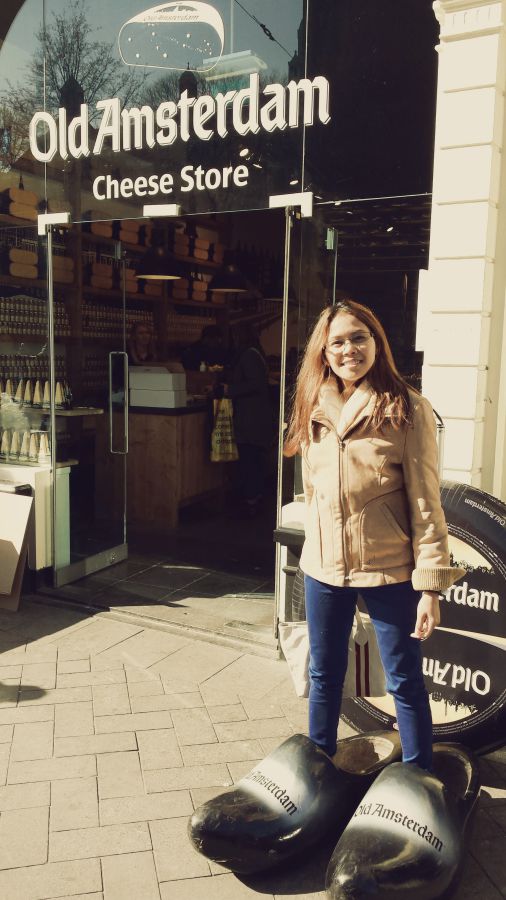 Stand in someones shoes! Holland clumps
Stand in someones shoes! Holland clumps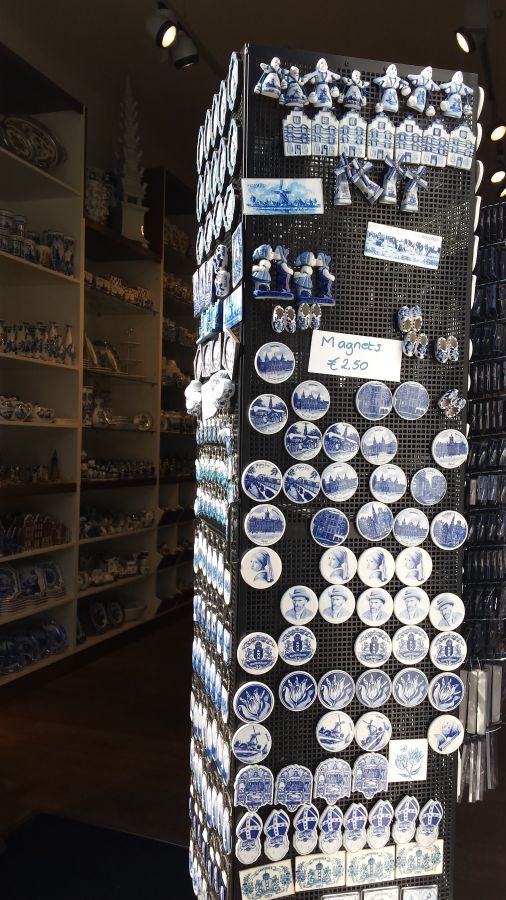 souvenirs shops allover
souvenirs shops allover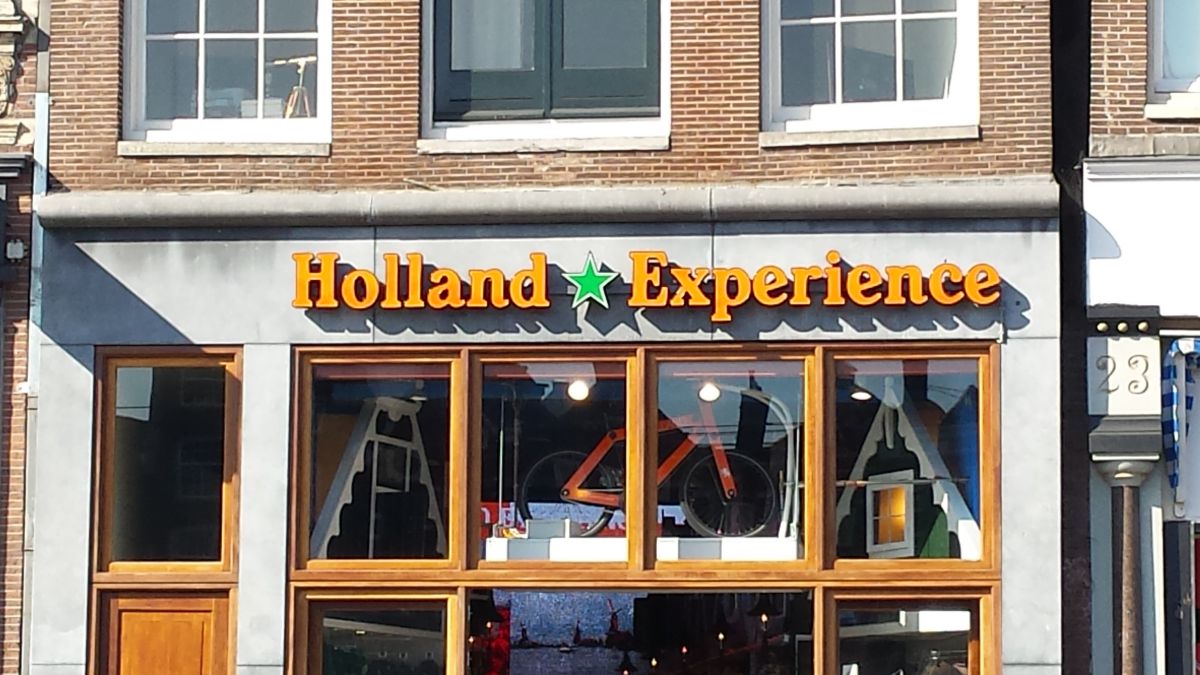 Yes we are in Holland province!
Yes we are in Holland province!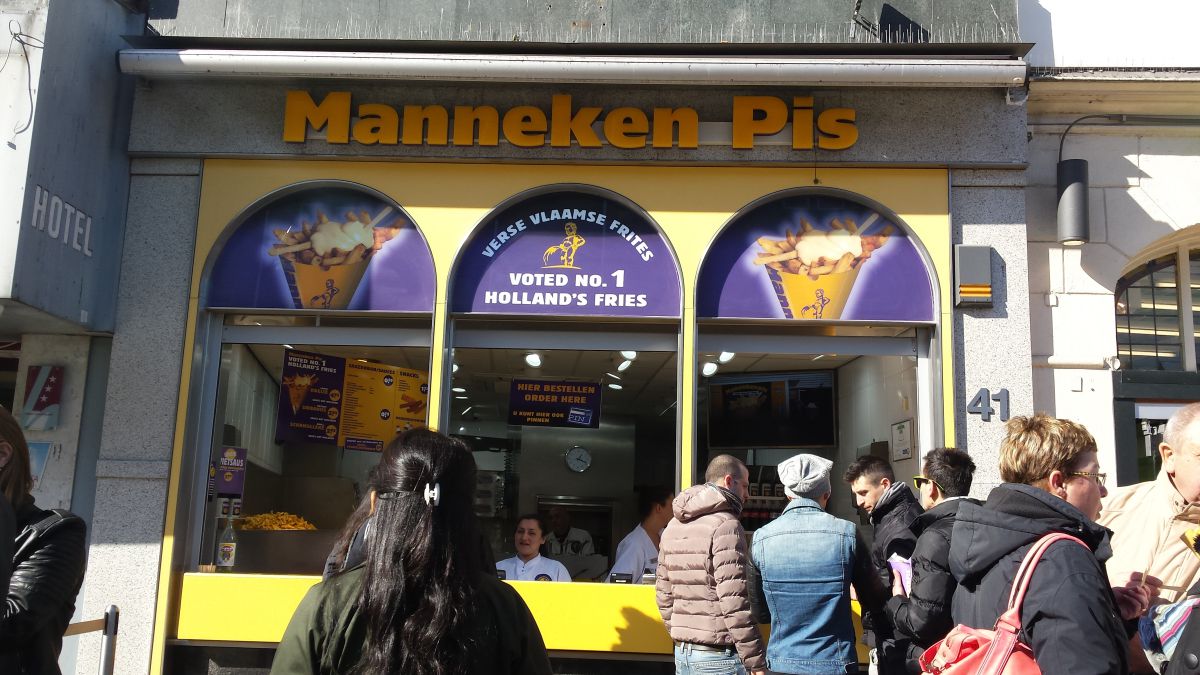 Strange combination: Holland Fries and a pissing boy.
Strange combination: Holland Fries and a pissing boy. The naked flying pig Inn.
The naked flying pig Inn.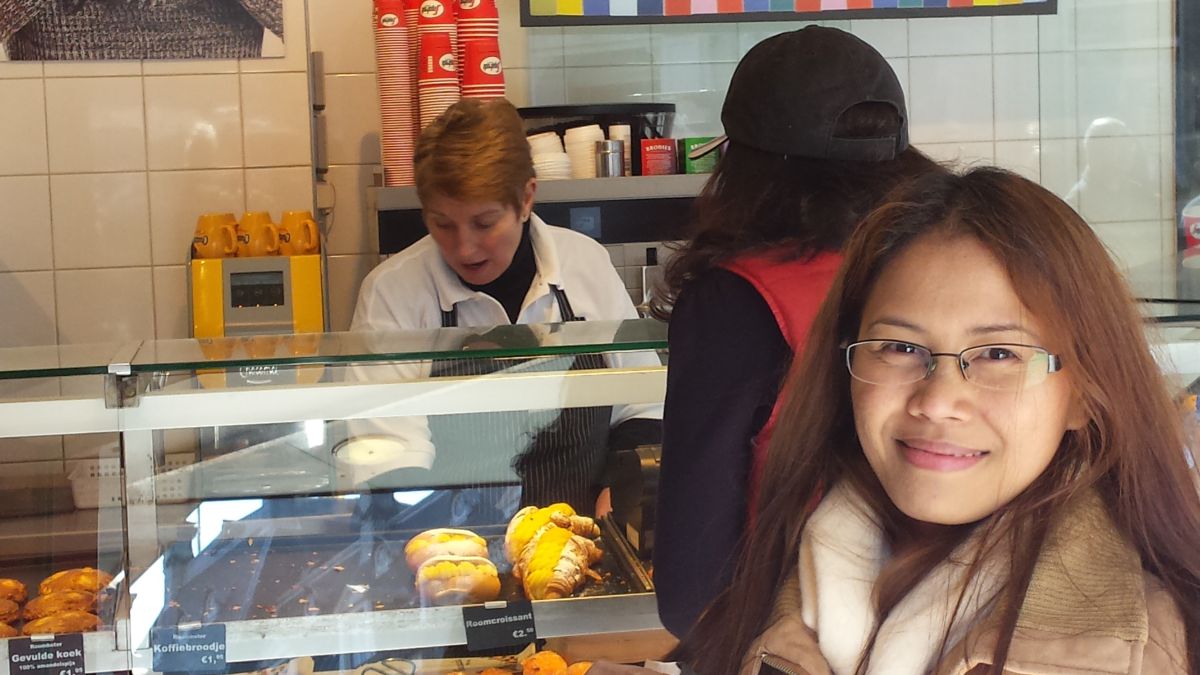 Time for a snack from the Pig Inn
Time for a snack from the Pig InnAfter a short walk from the station, we arrive at a large square called The Dam. According to history created in the 13th century when a dam was built around the river Amstel to prevent the Zuiderzee sea from flooding the city. During the sixties, the square was renowned for its Dam Square hippies. These days it is one of the main tourist sights and expect lots of entertainment. And pigeons. Even in winter time mimers and other street performers come out to surprise unexpected onlookers. The Royal Palace is fronting the square. A white obelisk stands opposite the Royal Palace as a remembrance of Dutch soldiers and members of the resistance who died in World War 2. Madame Tussauds is also present on one of the street corners. And the century old Grand Hotel Krasnapolsky
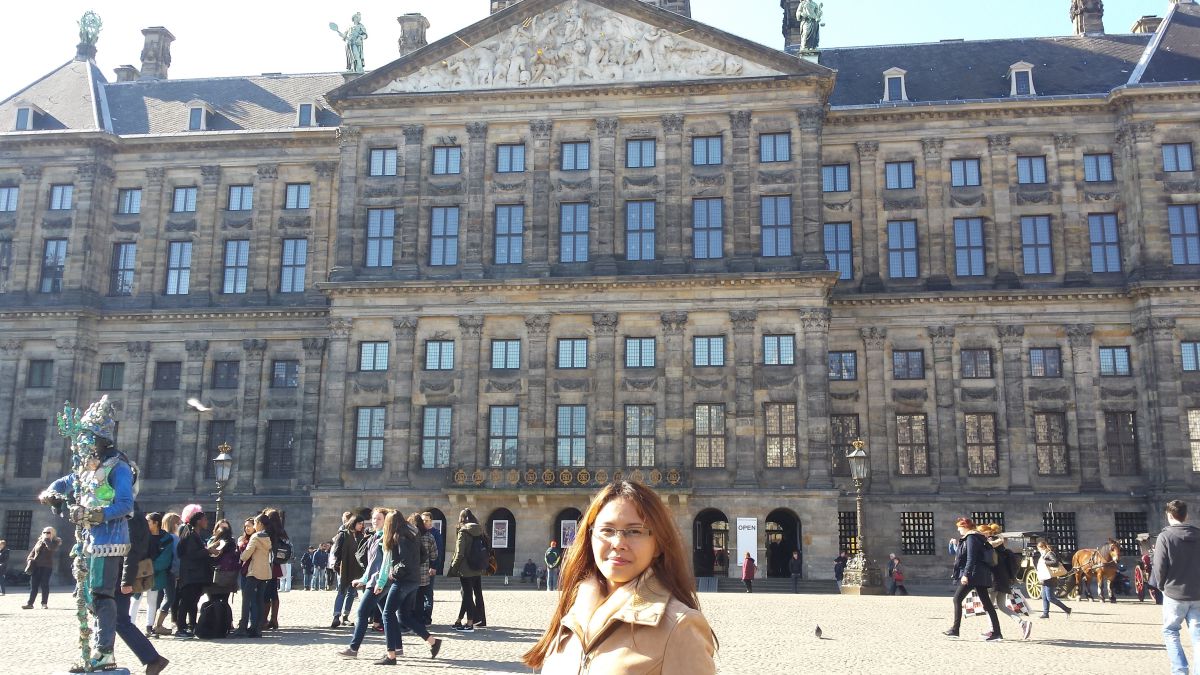 The Royal Palace
The Royal Palace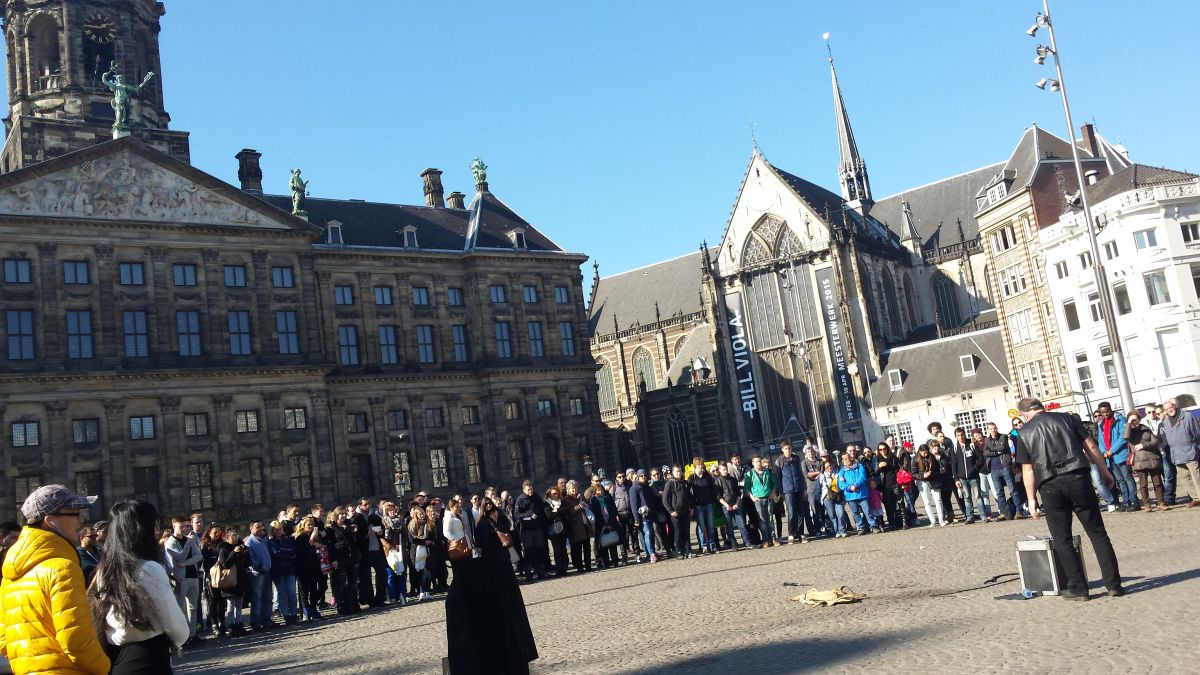 The square with mimers and street performers
The square with mimers and street performers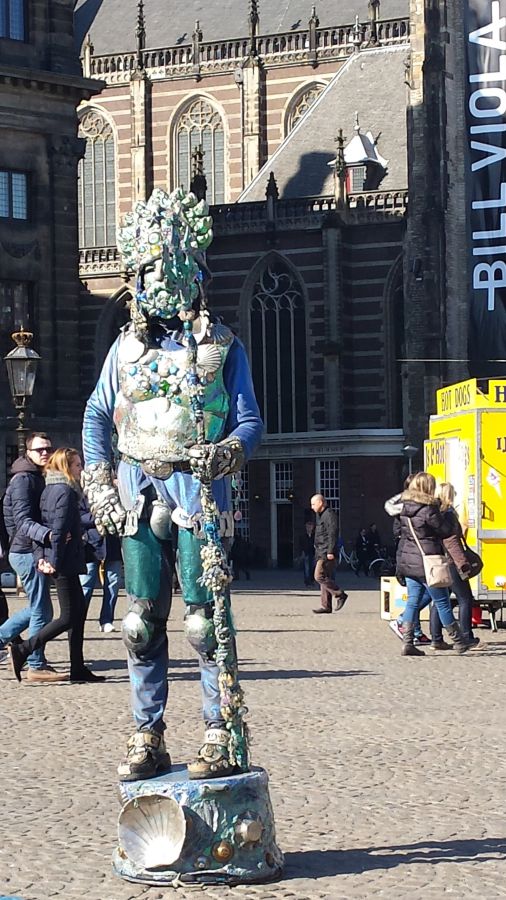 Up close with street performers. In the background the "New Church"
Up close with street performers. In the background the "New Church"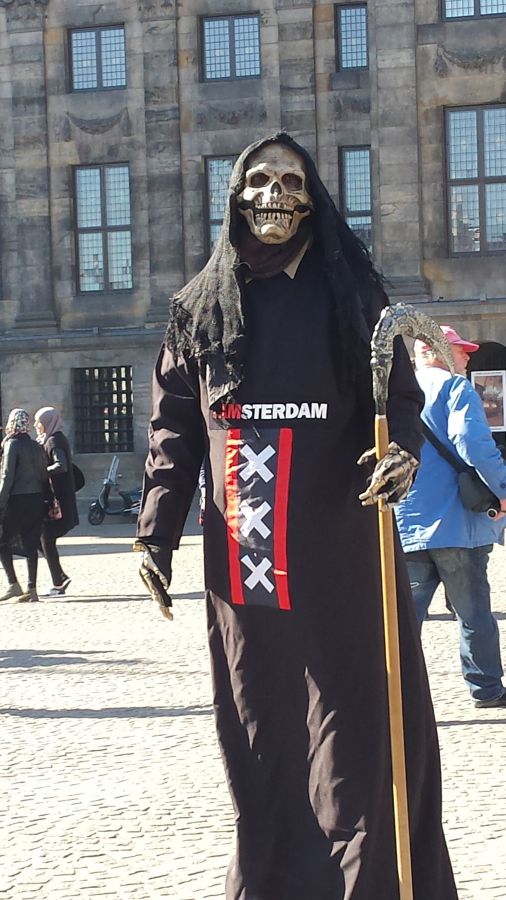 Another sinister street performer
Another sinister street performer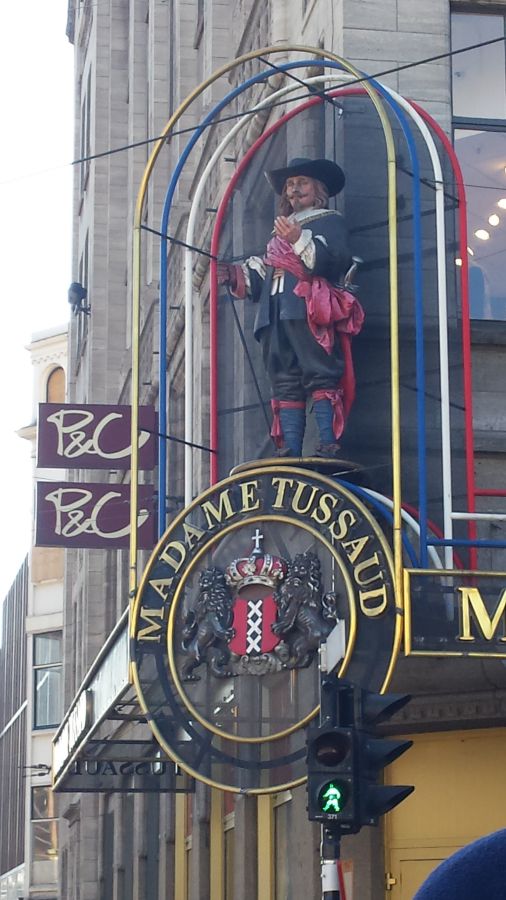 Madam Tussaud wax museum
Madam Tussaud wax museum War memorial with in the background the Grand Hotel Krasnapolsky
War memorial with in the background the Grand Hotel Krasnapolsky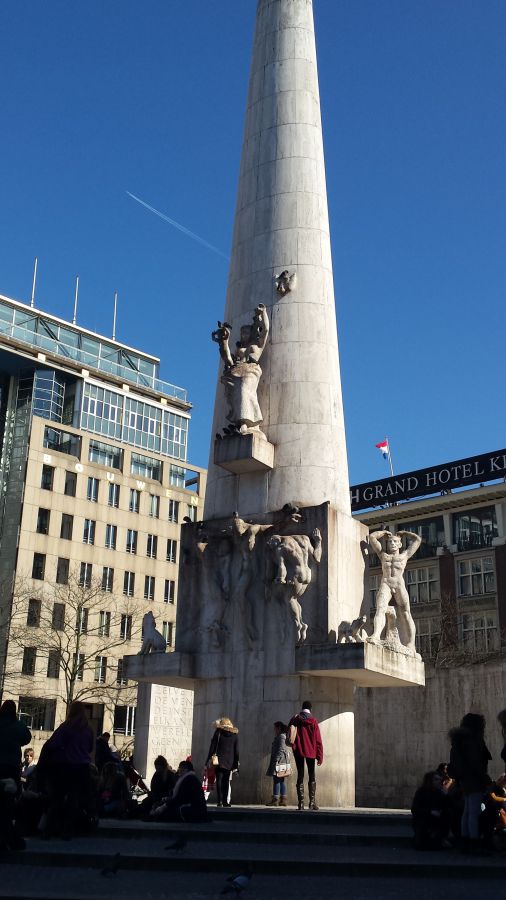 Obelisk war memorial
Obelisk war memorialContinue walking along the roads and canals. Looking for a place to eat. The influx of migrants from all over the world shows on of many international restarants lining the streets. Eventually we found a place to eat but long forgotten where it was.
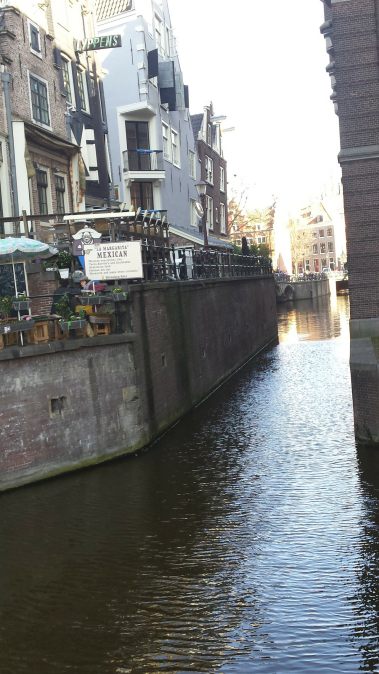 Looking for a place with food..
Looking for a place with food.. Lots of Asian shops and eateries
Lots of Asian shops and eateries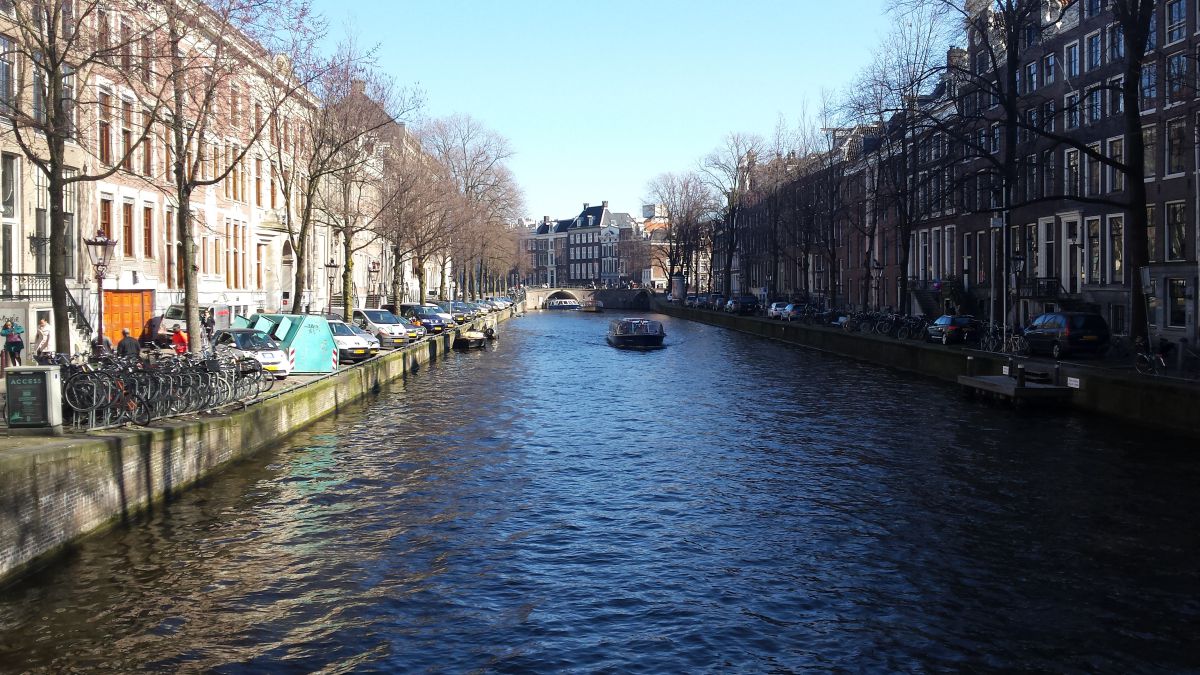 Canals....
Canals....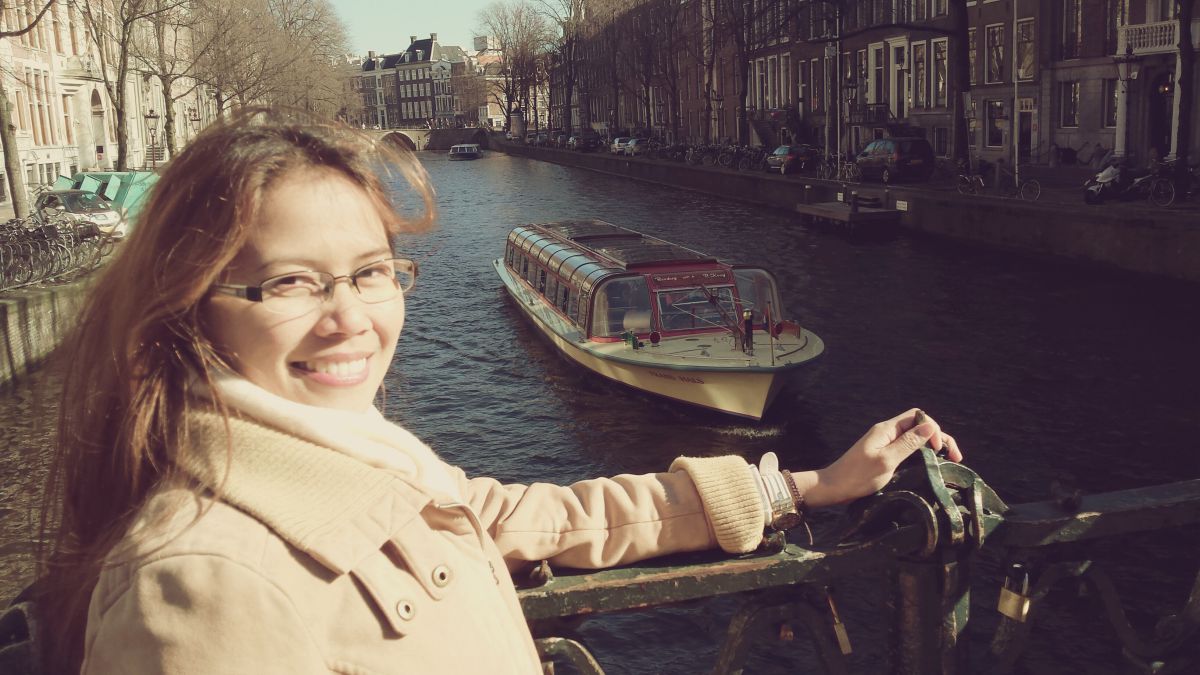 ... and more canals
... and more canals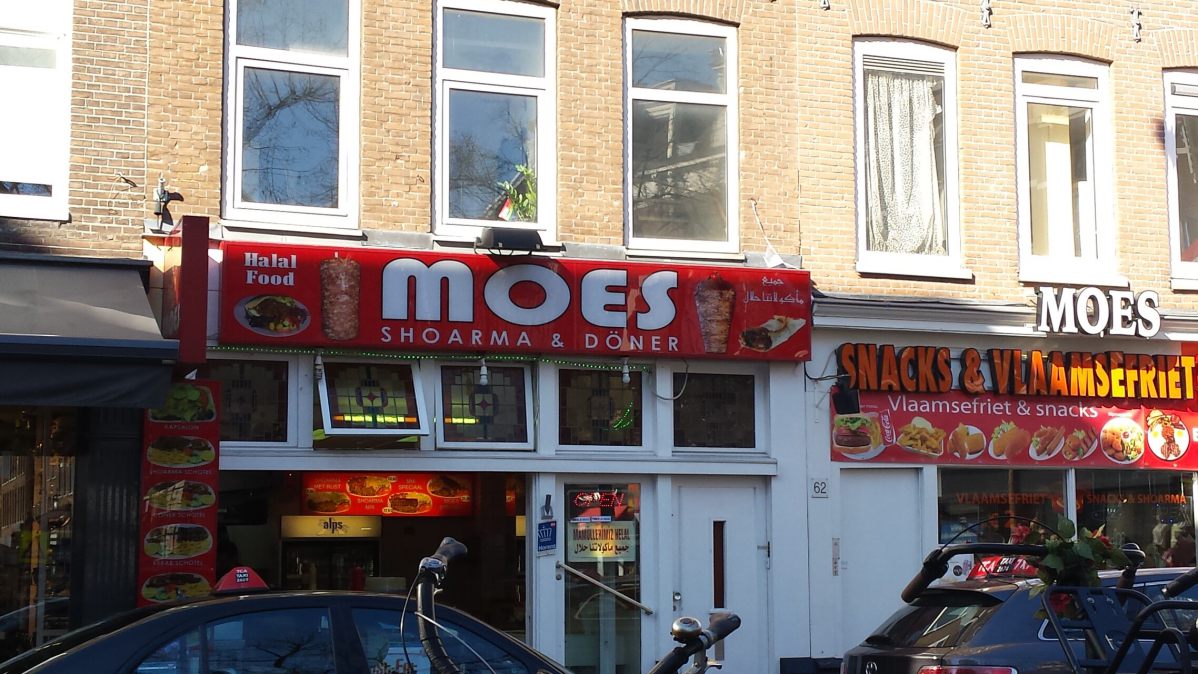 Why not try Turkisch food or something Flemish next door. If that doesn't work try a delivery next. {fa-hand-o-right }
Why not try Turkisch food or something Flemish next door. If that doesn't work try a delivery next. {fa-hand-o-right }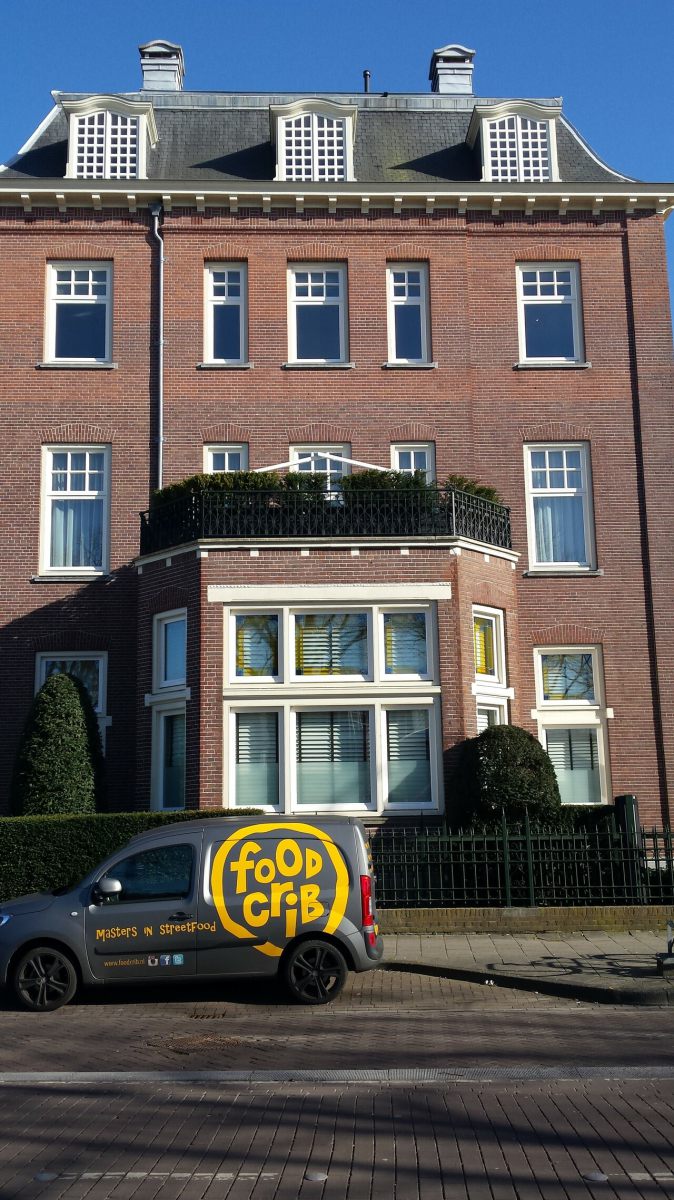
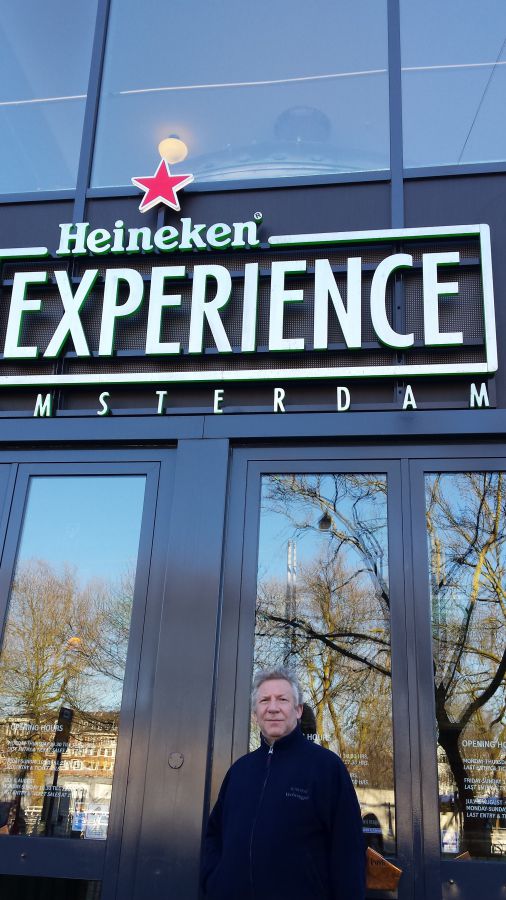
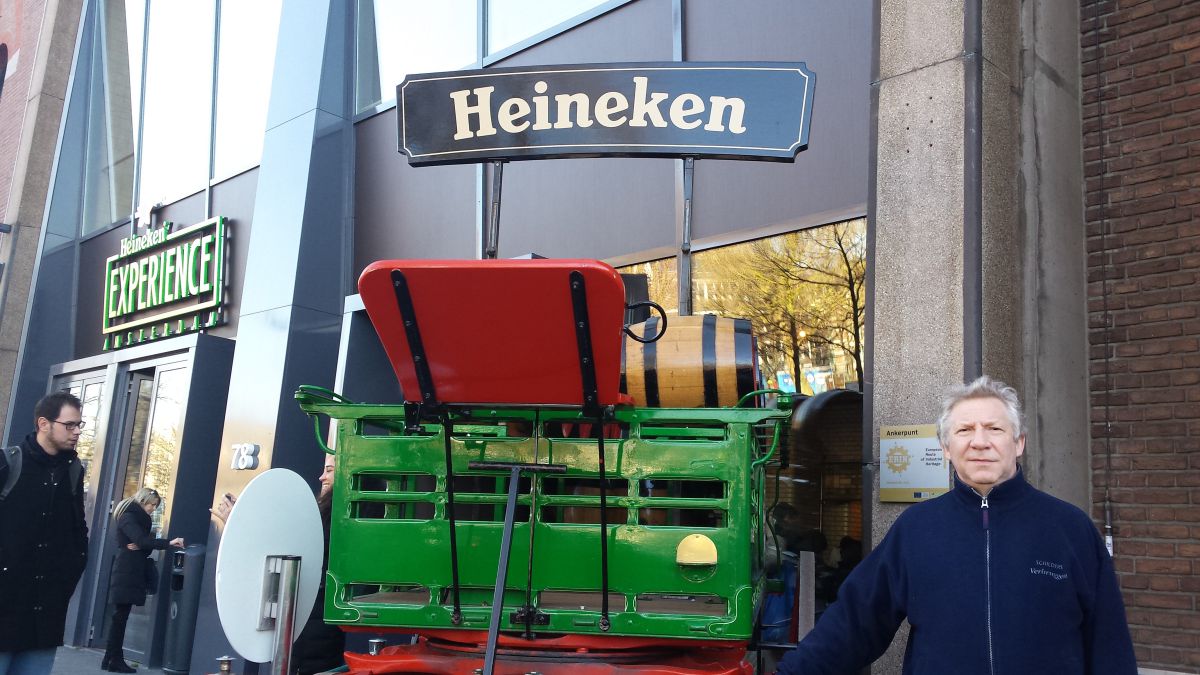
Not far from the place we had lunch, there is Heiniken Brewery. It has some kind of museum
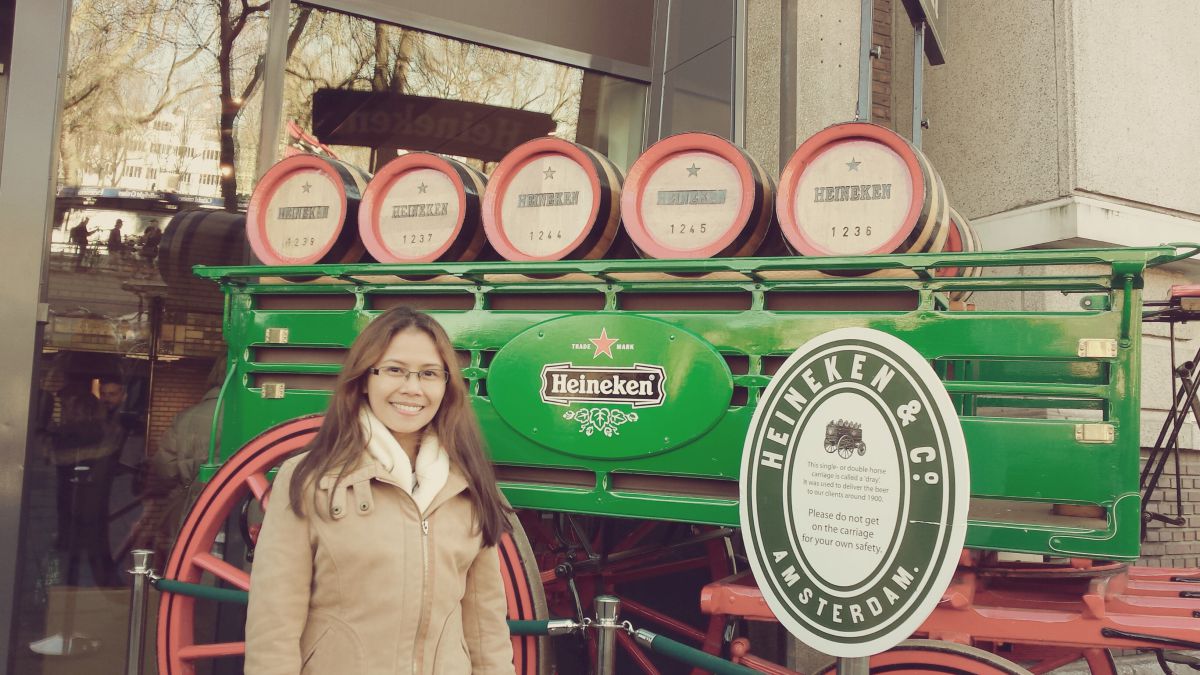
The walk continious. Next stop is the Rijksmuseum. We did not enter the museum. It was already late afternoon. But the yard in front of the museum is an attraction on its own
The Rijksmuseum is the museum of the Netherlands. Its world-famous masterworks from the Dutch Golden Age include the Milkmaid by Vermeer and Rembrandt's Night Watch. The Rijksmuseum itself is also a masterpiece. The collection is presented in a stunning building with amazing interior design. In 80 galleries 8,000 objects tell the story of 800 years of Dutch art and history, from the Middle Ages to Mondrian.
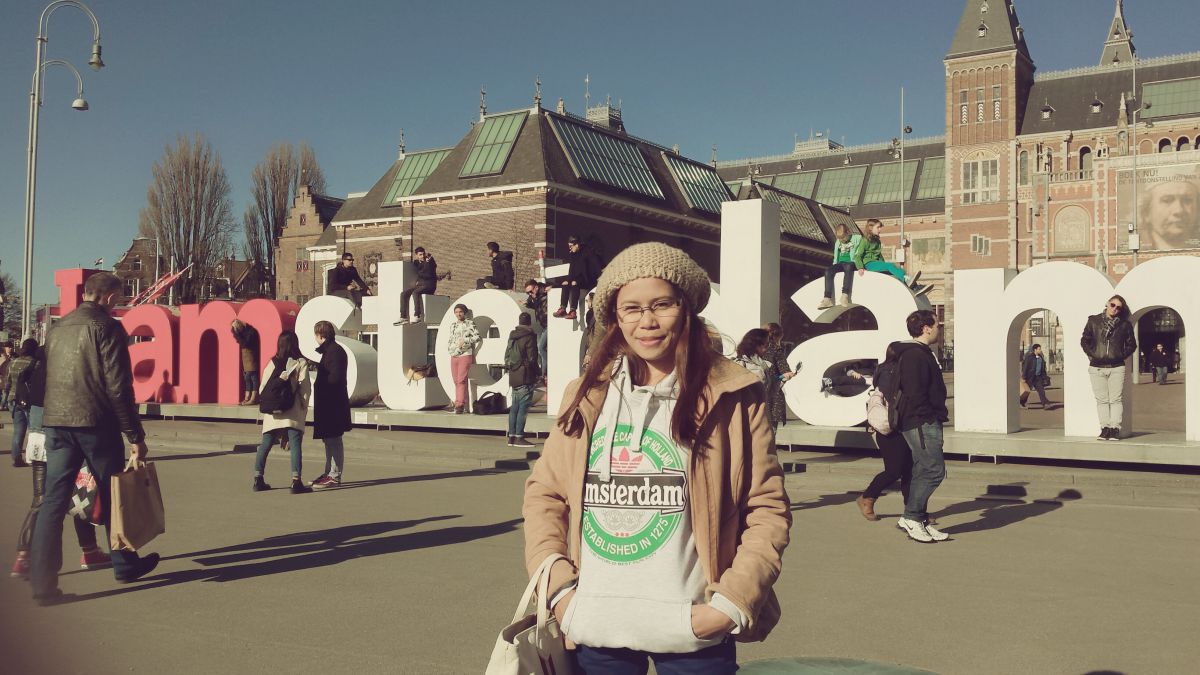
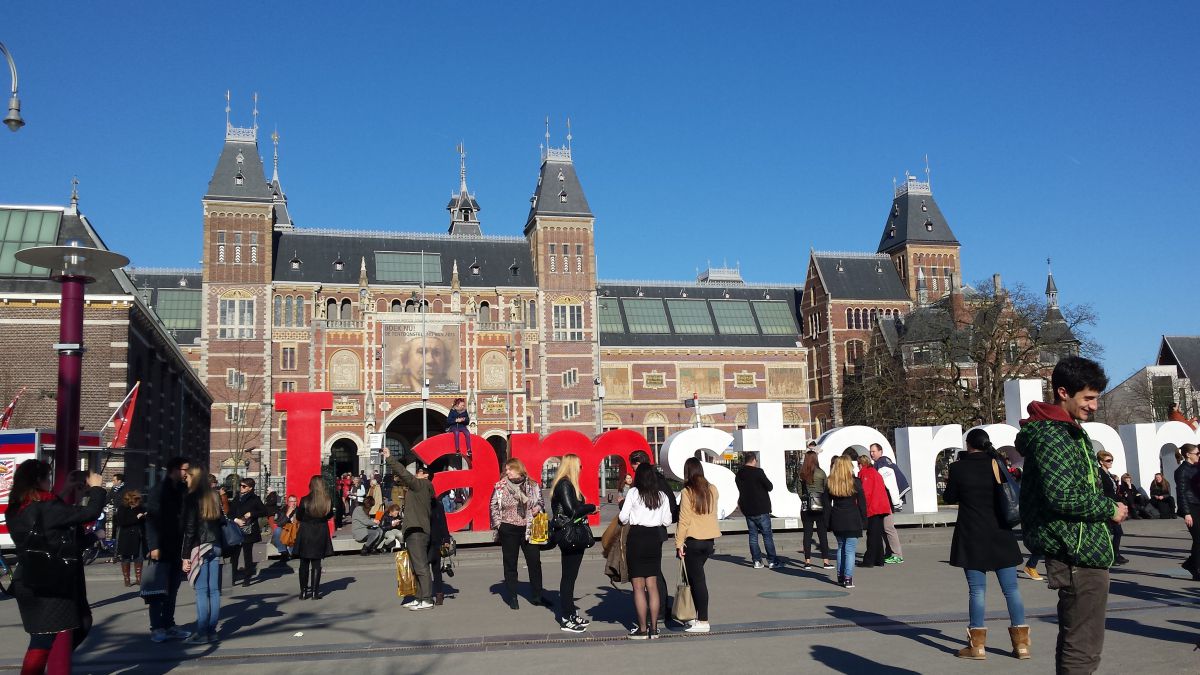
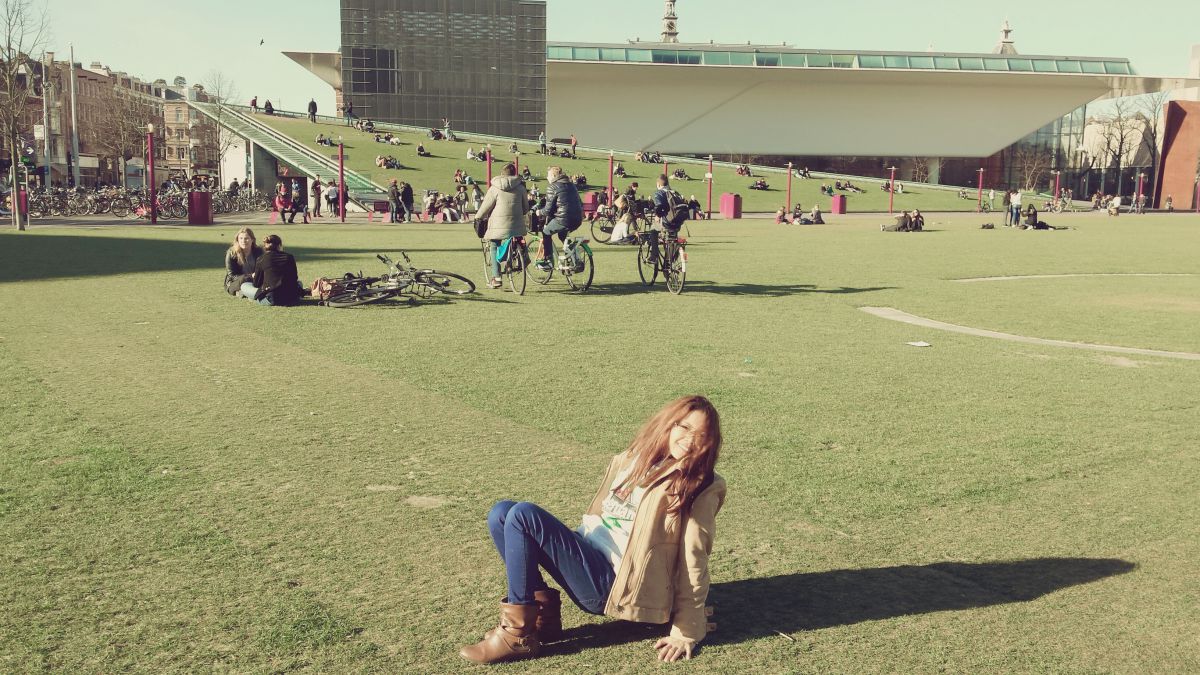
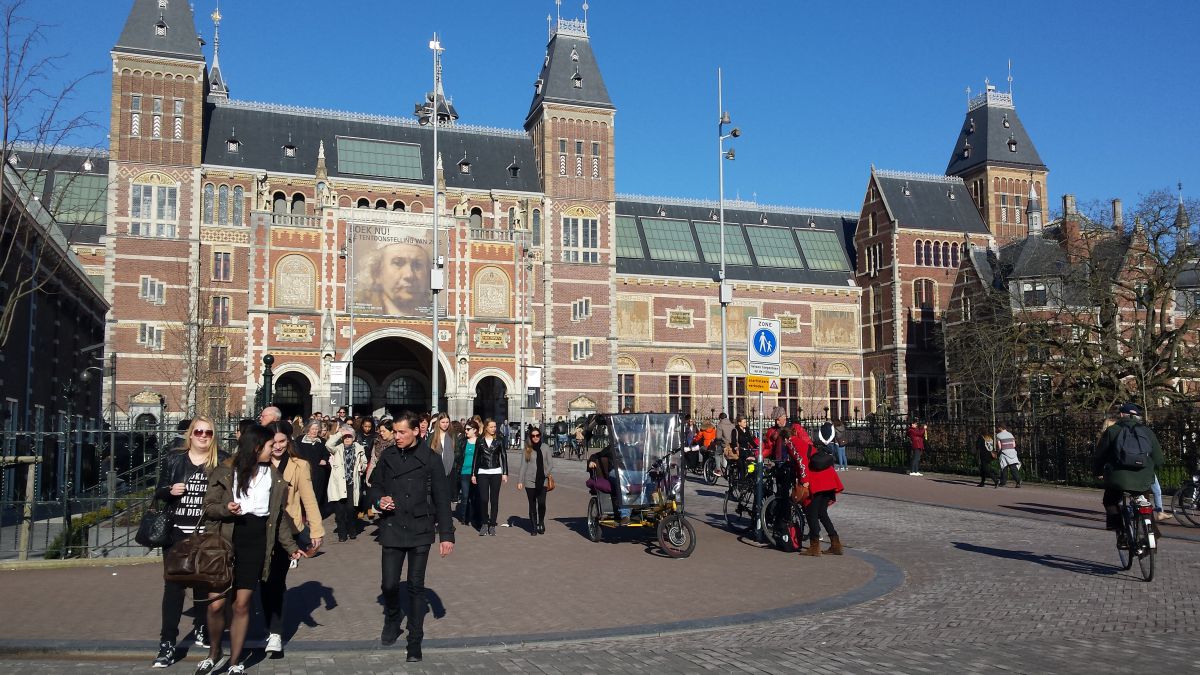
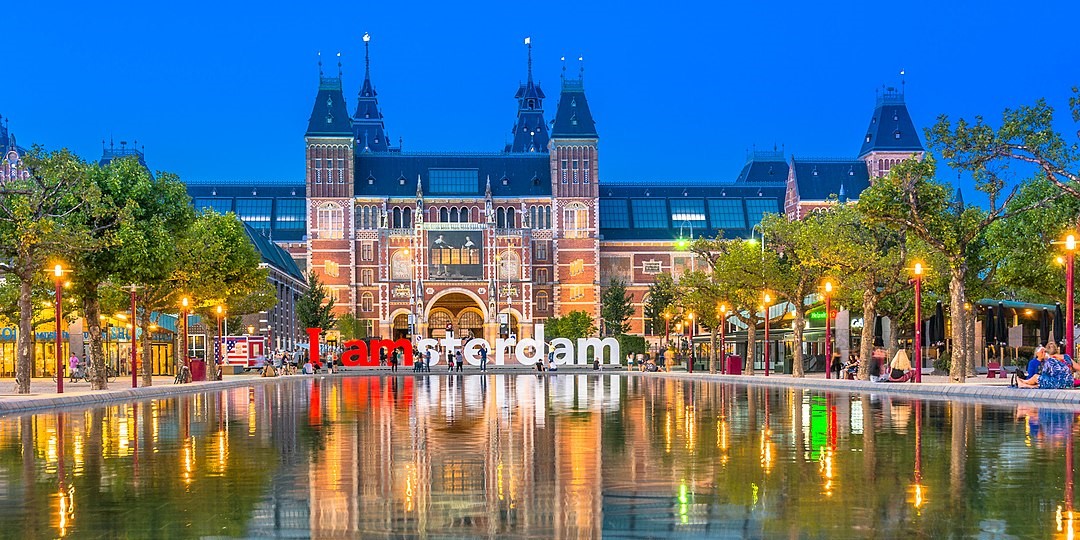
This was a quick run of our Amsterdam visit. We should go back sometime in summertime.
Amsterdam, city and port, western Netherlands, located on the IJsselmeer and connected to the North Sea. It is the capital and the principal commercial and financial centre of the Netherlands.
To the scores of tourists who visit each year, Amsterdam is known for its historical attractions, for its collections of great art, and for the distinctive colour and flavour of its old sections, which have been so well preserved. However, visitors to the city also see a crowded metropolis beset by environmental pollution, traffic congestion, and housing shortages. It is easy to describe Amsterdam, which is more than 700 years old, as a living museum of a bygone age and to praise the eternal beauty of the centuries-old canals, the ancient patrician houses, and the atmosphere of freedom and tolerance, but the modern city is still working out solutions to the pressing urban problems that confront it.
Amsterdam is the nominal capital of the Netherlands but not the seat of government, which is The Hague. The royal family, for example, is only occasionally in residence at the Royal Palace, on the square known as the Dam, in Amsterdam. The city lacks the monumental architecture found in other capitals. There are no wide squares suitable for big parades, nor are there triumphal arches or imposing statues. Amsterdam’s intimate character is best reflected in the narrow, bustling streets of the old town, where much of the population still goes about its business. While there are reminders of the glorious past—gabled houses, noble brick facades clad with sandstone, richly decorated cornices, towers and churches, and the music of carillons and barrel organs—the realities of life in the modern city often belie this romantic image.
The inner city is divided by its network of canals into some 90 “islands,” and the municipality contains approximately 1,300 bridges and viaducts. Amsterdam is the economic centre of the Netherlands, and there tradition persists alongside innovation. Although the city has a modern metro system, about one-fifth of the workforce still relies on the time-honoured bicycle for transportation. The city continues to be famous for its countless Chinese and Indonesian restaurants and the hundreds of houseboats that line its canals. Since the mid-1960s Amsterdam also has been known for a permissive atmosphere, and it attracts many people seeking an alternative lifestyle



 The flat
The flat  TingTing,
TingTing,  Direction indicator
Direction indicator Central Station. "Amsterdam Centraal"
Central Station. "Amsterdam Centraal"
Comments powered by CComment